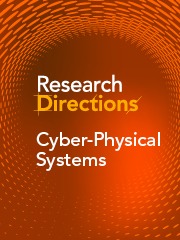Context
Modern cyber-physical systems (CPS) integrate machine learning and deep learning components for a variety of tasks, including sensing, control, anomaly detection and learning process dynamics from data. Formal verification of CPS is paramount to ensure their correct behaviour in many safety-critical application domains (including robotics, avionics, health and automotive). However, traditional CPS verification methods are designed to work with mechanistic CPS models, and hence cannot deal in general with data-driven components. Therefore, how to guarantee the correct behaviour of learning-enabled CPS is still an open question which must be addressed in order to deploy these systems in real-world safety-critical settings.
Within this research question, we welcome contributions about the formal analysis of learning-enabled CPSs. Examples include but are not limited to:
-
Verifying systems with machine-learning components in the loop (including model checking and theorem proving).
-
Formal reasoning about the model’s (epistemic) uncertainty.
-
Learning safe data-driven models for CPS monitoring and control.
-
Dealing with distribution shifts induced by (possibly adversarial) runtime changes of the CPS (e.g., detecting when existing system properties cease to hold and adapting the verification methods to account for such runtime changes).
How to contribute to this Question
If you believe you can contribute to answering this Question with your research outputs, find out how to submit in the Instructions for authors (https://www.cambridge.org/core/journals/research-directions-cyber-physical-systems/information/author-instructions/preparing-your-materials). This journal publishes Results, Analyses, Impact papers and additional content such as preprints and “grey literature”. Questions will be closed when the editors agree that enough has been published to answer the Question so before submitting, check if this is still an active Question. If it is closed, another relevant Question may be currently open, so do review all the open Questions in your field. For any further queries, check the information pages (https://www.cambridge.org/core/journals/research-directions-cyber-physical-systems/information/about-this-journal) or contact this email (cps@cambridge.org).
Competing interests
The authors declare none.




